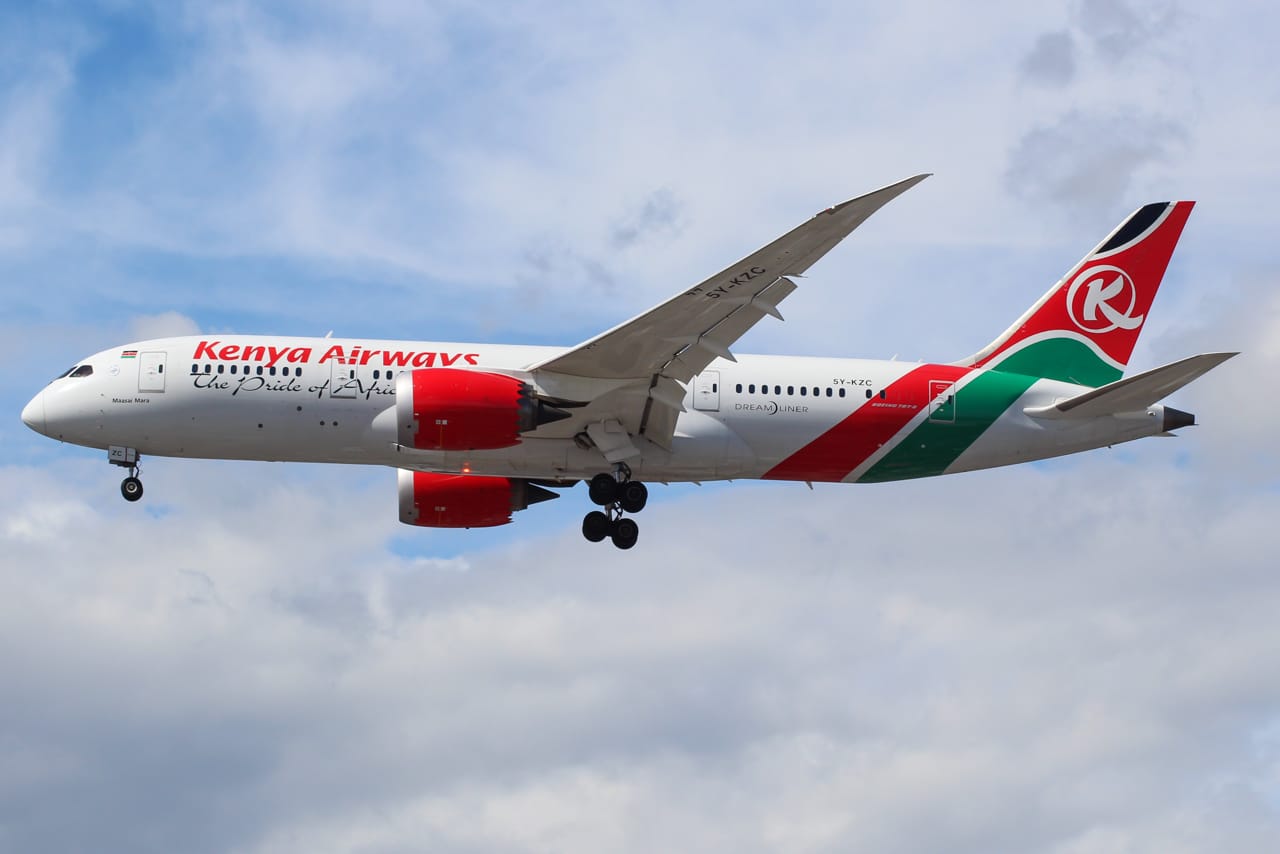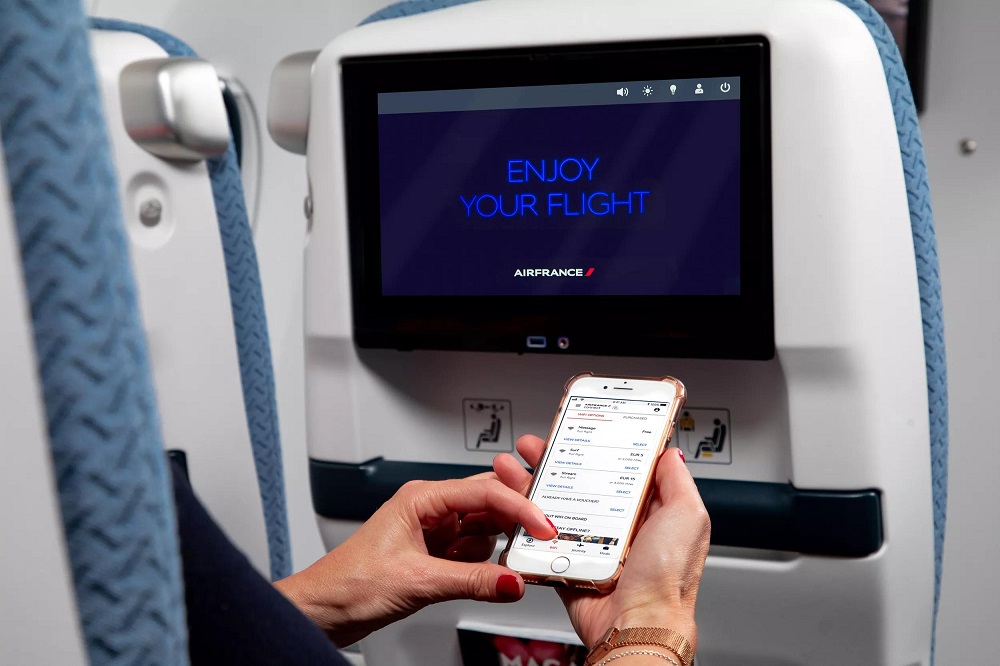Airlines
Kenya Airways first-half loss narrows 15% as borders reopen
Kenya Airways first-half loss narrows 15% as borders reopen

Kenya Airways reported on Wednesday that the first half of the year saw a 15% reduction in pretax loss because to an increase in passenger and cargo income brought on by the opening of borders and the relaxation of COVID-19 regulations.
Pretax losses for the airline were 9.861 billion shillings ($82.35 million), down from losses of 11.542 billion shillings a year earlier. First-half revenue jumped by 76% over the same period last year, while operational expenditures increased by 53%.
At a conference, Kenya Airways officials stated that fuel costs were a significant cost factor and that the pretax loss would have been 3.328 billion shillings at last year’s fuel rates.
According to the chief financial officer of the company, The airline did not hedge on jet fuel in the first half but occasionally does and continues to observe market developments.
Some important markets have had swift recoveries as a result of worldwide border openings. The first phase of the travel recovery is still being actively embraced by Kenya Airways.
Allan Kilavuka, CEO of Kenya Airways Group, is “confident” that the airline would resume growth and profitability in 2024 as a result of the restructuring and cost-reduction initiatives.

Airlines
These 6 Airlines Are Giving You Free Wi-Fi on Your 2025 Flights

In a world where staying connected is more important than ever, airlines are stepping up their game by offering passengers free Wi-Fi during their flights.
Gone are the days of paying exorbitant fees to check your emails or scroll through social media at 30,000 feet. Staying connected during a flight is becoming easier than ever, and in 2025, wireless password wifi airport and several airlines are taking it a step further by offering free Wi-Fi for their passengers.
Why Elon Musk Believes the F-35 Stealth Jet Is Obsolete – Here’s Why
Here’s a look at six airlines that are leading the way in offering free high-speed internet for everyone on board.
- 1.Air France
Starting in the summer of 2025, Air France is teaming up with Starlink to offer ultra-fast Wi-Fi on all its flights. The service promises a “ground-like” internet experience and will be available free of charge for passengers in all cabin classes. To access the Wi-Fi, passengers can log in using their Flying Blue loyalty program accounts. - 2.Hawaiian Airlines
Hawaiian Airlines made history as the first U.S. airline to partner with Starlink back in 2022. By September 2024, the airline successfully installed the high-speed Wi-Fi on all of its Airbus aircraft. With this partnership, airport wifi passwords passengers can enjoy reliable internet throughout their flight. - 3.JetBlue
JetBlue has been a pioneer in offering free Wi-Fi to its passengers. The Boston-based airline was the first major carrier to provide free Wi-Fi for all its customers, regardless of cabin class. The service is powered by ViaSat, ensuring that JetBlue passengers stay connected even in the sky. - Virgin Australia Launches Black Friday Sale on Flights Worldwide
- 4.Delta Air Lines
Delta is rolling out fast, free Wi-Fi across its fleet, thanks to a partnership with T-Mobile. As of 2025, SkyMiles® Members on most domestic flights can enjoy free Wi-Fi. The airline is also working to extend this service to its international and regional routes, ensuring more passengers can stay connected. - 5.Air New Zealand
Air New Zealand is one of the first international airlines to offer free Wi-Fi, thanks to its partnership with Starlink. The airline has already rolled out free Wi-Fi on many of its flights, allowing passengers to enjoy seamless internet access while traveling to and from New Zealand. - 6.China Eastern Airlines
- China Eastern Airlines offers free Wi-Fi on select flights to and from major U.S. cities, including San Francisco and Chicago. American passengers flying on these routes can stay connected with no extra cost during their journey.
-

 Aviation2 months ago
Aviation2 months agoMicrosoft Flight Simulator Raises $3 Million to Bring Back the An-225 Mriya
-

 Airlines2 months ago
Airlines2 months agoQatar Citizens Can Travel to the United States Without a Visa
-

 Aviation2 months ago
Aviation2 months agoQatar Airways bans these new Electronic Devices on plane
-

 Defence2 months ago
Defence2 months agoWhich Country Has the Largest Fleet of Fighter Aircraft?
-

 Airlines1 week ago
Airlines1 week agoDAMAC Air: Dubai’s New Luxury Airline Offers Free Flights for Registration
-

 Airport2 months ago
Airport2 months agoWestern Sydney Airport Welcomes Its First Plane After 6 Years of construction
-

 Airlines6 days ago
Airlines6 days agoAir India to Launch aircraft maintenance training institute in Bengaluru
-

 Aviation2 months ago
Aviation2 months agoDid you know ? Once Boeing 747 carried 1088 passenger in 1991








